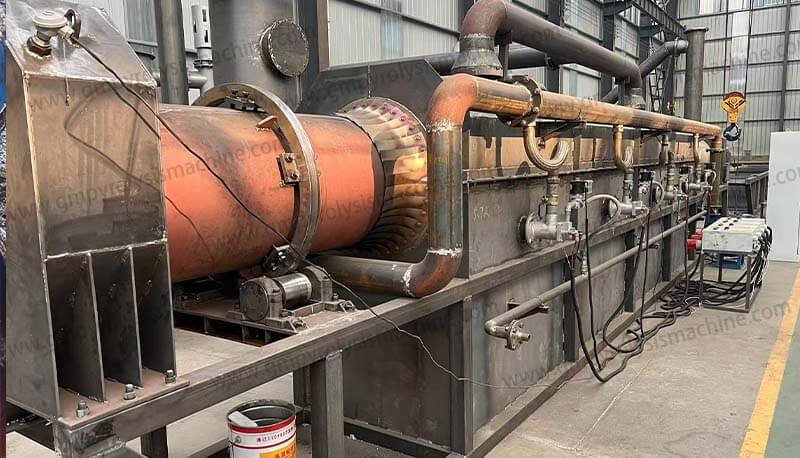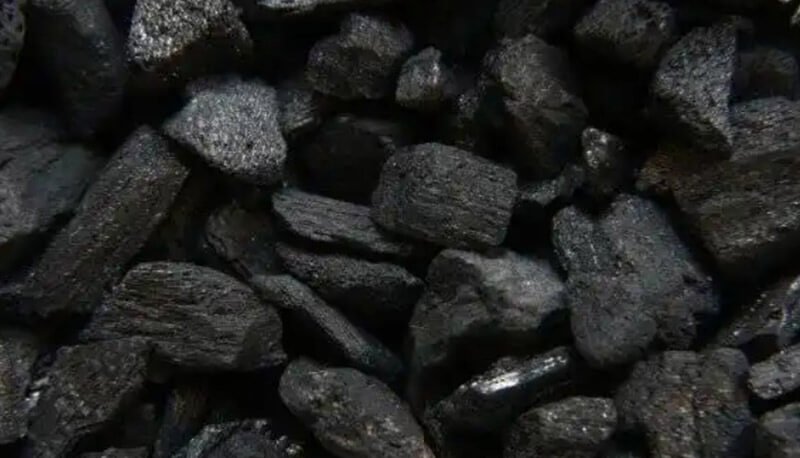What is Sludge Carbonization Pyrolysis Machine?
Sludge carbonization pyrolysis machine is a process that involves heating sludge at high temperatures in an oxygen-free environment. This results in the decomposition of organic materials in the sludge into valuable byproducts, such as biochar, oil, and gas.
How Does the Sludge Carbonization Pyrolysis Machine Work?
The sludge carbonization pyrolysis machine operates on the principle of thermal decomposition. Here’s how it works in simple terms:
Heating: The sludge is loaded into the pyrolysis chamber.
Pyrolysis Process: The machine heats the sludge to temperatures typically between 400°C and 600°C, breaking down its components.
Absence of Oxygen: Unlike combustion, the process takes place without oxygen, ensuring that the materials do not burn but decompose in a controlled way.
Collection of Byproducts: During this process, gases, oils, and solid residues (biochar) are generated. These byproducts can be collected and used for different applications, making the process both environmentally friendly and economically viable.
The process is automated and can be customized based on the type of sludge and the specific requirements of the facility.
The Benefits of Sludge Carbonization
The sludge carbonization process offers numerous benefits:
Waste Reduction: It helps to significantly reduce the volume of waste, turning sludge into a much smaller amount of solid residue (biochar).
Energy Generation: The gases produced during pyrolysis can be used to generate heat or electricity, making the process self-sustaining.
Environmental Safety: By converting sludge into less harmful byproducts, it reduces the risk of contamination to soil and water sources.
Cost Efficiency: Industries can cut down on the costs associated with sludge disposal while potentially generating new revenue streams through the sale of byproducts.
In essence, it helps solve multiple problems with a single, efficient solution.
Key Components of the Sludge Carbonization Pyrolysis Machine
A typical sludge carbonization pyrolysis machine consists of several key components that work together to carry out the pyrolysis process efficiently:
Feeding System: The system that introduces the sludge into the reactor.
Reactor: The main chamber where the pyrolysis takes place. This is where the sludge is heated to high temperatures.
Condensation System: Gases produced in the reactor are cooled and condensed into liquid oils.
Gas Collection: The gaseous byproducts are collected and can either be stored or used for energy production.
Cooling System: This helps cool down the biochar to a safe temperature for easy collection.
Each of these parts plays a crucial role in ensuring that the machine operates smoothly and efficiently.
Cost Considerations of Sludge Carbonization Pyrolysis Machines
The initial investment in a sludge carbonization pyrolysis machine can be high, but it can pay off in the long run. Some of the cost factors to consider include:
Machine Price: The upfront cost of purchasing the machine depends on its size, capacity, and features.
Operational Costs: These include energy usage, maintenance, and staffing, but the energy recovery potential of the machine can significantly reduce these costs.
Return on Investment (ROI): Businesses can generate income from the sale of biochar, pyrolysis oil, and gases. The reduction in waste disposal costs also contributes to a faster ROI.
Though the price may seem steep initially, the economic benefits over time, including reduced disposal fees and potential income from byproducts, make sludge carbonization pyrolysis a wise investment.
Conclusion: The Role of Sludge Carbonization Pyrolysis Machines in a Greener Future
Sludge carbonization pyrolysis machines are revolutionizing waste management. By turning waste sludge into useful byproducts like biochar, oil, and gas, these machines not only reduce the environmental impact of waste but also help businesses and municipalities generate additional revenue. With their potential to reduce landfill use, minimize pollution, and support sustainable development, these machines represent a key part of the solution to managing industrial and wastewater sludge.



